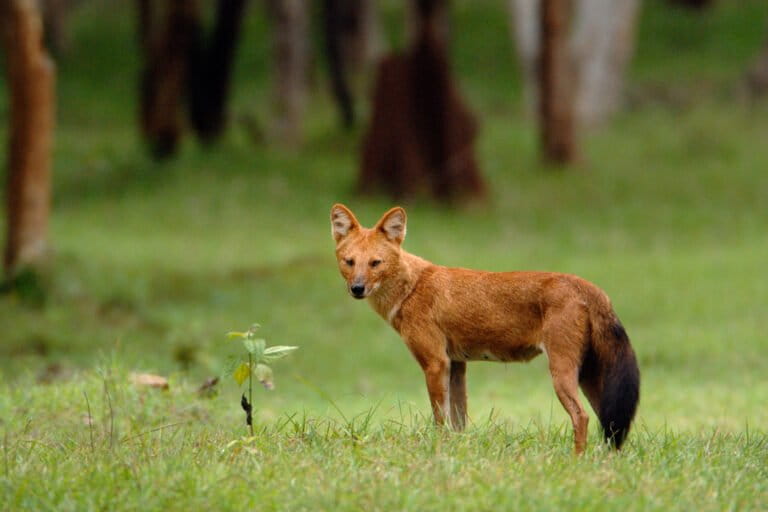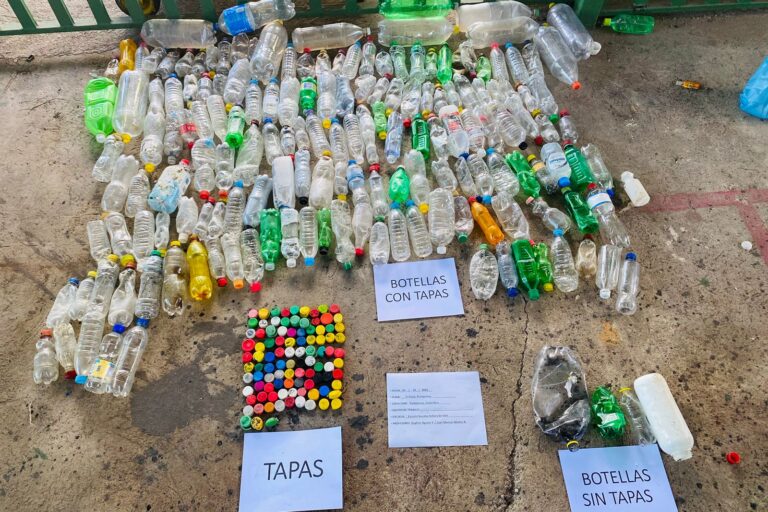- Earth’s climate is controlled by a complex network of interactions between the atmosphere, oceans, lands, ice and biosphere. Many elements in this system are now being pushed toward tipping points, beyond which changes become self-sustaining, with the whole Earth system potentially shifting to a new steady state.
- A recent study analyzed 40 years of air temperature measurements at more than 65,000 locations to investigate how changes in one region rippled through the climate system to affect temperatures in other parts of the globe. Computer models then simulated how these links may be affected by future climate change.
- Researchers identified a strong correlation between high temperatures in the Amazon Rainforest and on the Tibetan Plateau. They found a similar relationship between temperatures in the Amazon and the West Antarctic Ice Sheet.
- Deforestation in the Amazon likely influences the Tibetan Plateau via a convoluted 20,000-kilometer (12,400-mile) pathway driven by atmospheric and oceanic circulation patterns. The study suggests that a healthy, functioning Amazon is crucial not only for the regional climate in Brazil, but for the whole Earth system.
There’s a recent saying, grown popular among climate scientists: “What happens in the Arctic doesn’t stay in the Arctic.” Now, new research adds to our understanding that, likewise, what happens in the Amazon Rainforest doesn’t stay there.
Researchers reporting in Nature Climate Change last month found that deforestation in the Amazon Rainforest may have knock-on effects for the climate in distant regions, potentially pushing key elements of the global climate system — on the Tibetan Plateau and the West Antarctic Ice Sheet — closer to climatic tipping points that could be catastrophic for humanity and our planet’s biodiversity.
Earth’s climate is controlled by a complex network of interactions between its atmosphere, oceans, land, ice and biosphere. Scientists have identified many elements of this system that humanity’s actions are presently pushing toward thresholds, or tipping points, beyond which changes become self-sustaining — ultimately causing the whole Earth system to shift into a new state possibly hostile to life in its current forms.
“Earth system components that have a critical threshold beyond which a system reorganizes are called tipping elements,” explained study co-author Jingfang Fan, an Earth system scientist at Beijing Normal University in China and the Potsdam Institute for Climate Impact Research (PIK) in Germany. These tipping elements include the Amazon Rainforest biome, the East and West Antarctic ice sheets, the Arctic permafrost, and the Great Barrier Reef, among others. It is theorized that a tipping point reached in one region could trigger a tipping point in another, and so on, like toppling dominoes.


To investigate how different tipping elements in the global climate system may be interconnected, researchers analyzed 40 years of hourly near-surface air temperature measurements accumulated by the European Centre for Medium-Range Weather Forecast, across a global grid of more than 65,000 locations, or nodes.
This immense network of data allowed scientists to investigate how changes in one region appear to ripple through the climate system to affect temperatures in other parts of the globe, by comparing the relationships between temperatures at nodes within the Amazon Rainforest with nodes in other regions. The researchers then used computer simulations to model how climate change might affect these connections between various tipping elements through the end of the 21st century.
“This is the first time that the [mathematical] theory of complex networks has been applied in the context of [far distant] tipping points,” said Teng Liu, a Ph.D. researcher in complex systems at Beijing Normal University, who performed the study. “We found that the Amazon Rainforest exhibits significant teleconnection with other tipping elements.”
The research team identified a strong correlation between temperature anomalies — where regional conditions buck the global trend — in the Amazon Rainforest and the Tibetan Plateau, roughly 15,000 kilometers (9,300 miles) distant. These anomalies allowed the authors to distinguish between the global trend of climatic warming and direct climate connections between distant regions.
The data showed that anomalously warm temperatures in the Amazon and Tibet have coincided over the last 40 years. They found a similar relationship between temperature in the Amazon and on the West Antarctic Ice Sheet, a key tipping element in Earth’s climate system.
Simulations of future climate change carried out by the researchers indicated that these connections are likely to be maintained to 2100. These computer models also showed that future extreme climate events in the Amazon and the Tibetan Plateau are likely to be synchronized.
This mathematical study demonstrated that “if you lost the Amazon [biome,] or if you disrupt the Amazon, there’s further knock-on implications elsewhere in the world,” said Tim Lenton, director of the Global Systems Institute at the University of Exeter in the U.K., who was not involved in the study. “Any advance in credibly mapping out these couplings between tipping elements gives us a richer picture of the kind of non-linear coupled dynamics of the Earth as a system.” Scientists agree that precisely detecting actual tipping points is impossible until you’ve passed through them, and can only be fully confirmed in hindsight.
The water-cycling capabilities of forests are responsible for generating roughly half the annual rainfall in the Amazon. But concerns have grown that with continued loss and degradation of the rainforest due to human activities, the Amazon biome is transitioning into a new, drier state, potentially causing the remaining forest to die out and be replaced by savanna, with profound rippling impacts for the global climate system.

Long-distance climate connections
Analyzing their data, the researchers say that deforestation (most of it due to intentionally set fires) in the Amazon may be responsible for the long-distance connection with conditions on the Tibetan Plateau, carried out via atmospheric and oceanic circulation patterns. That connection follows a convoluted, meandering 20,000-km (12,400-mi) pathway that carries air from central South America to the southern coast of Africa, then north, through eastern Africa, finally veering west through the Middle East to the Himalayas, where it reaches the Tibetan Plateau.
“Wind or ocean currents may carry dust or black carbon particles generated by the burning of the Amazon forest, which could then be transported to the Tibetan Plateau via this pathway,” helping warm the atmosphere over Tibet and melt snow, explained Fan. Further research will be needed to confirm and better define these pathways and the intercontinental climate connections they underpin.
The researchers found evidence that “snow cover in the Tibetan Plateau has been losing stability since 2008, which implies that [it] is an activated tipping element,” said Liu. While the Tibetan Plateau may be close to its tipping point, “we don’t know what kind of new state the Tibetan Plateau will remain in if it crosses the threshold,” Fan warned.

Lenton said it remains unclear whether passing such a threshold on the Tibetan Plateau would lead to the kind of self-sustaining feedback loop that is the defining characteristic of a tipping element, but he agreed that “abrupt change on the Tibetan Plateau would have quite significant impacts regionally and [likely lead to] climate feedbacks as well.”
The study adds to a growing weight of evidence that a healthy, functioning ecosystem in the Amazon is crucial, both for the regional climate in Brazil and other South American nations, and also for the whole Earth system. But forecasting exactly when regional tipping points will be reached, and how these regional climatic dominoes may fall, is extremely difficult to determine — though this study aids in connecting some global climatic dots. What is certain is that we are changing Earth in dangerous ways.
Lenton believes that an expanded market for genuine carbon credits in the Amazon could be the “ultimate savior” for preserving this vital, yet vulnerable ecosystem.
Banner image: A major fire in the Amazon rainforest near the city of Porto Velho, Rondônia state, Brazil, August 2019. Soot from massive Amazon wildfires — blazes set on purpose to deforest land to be sold as new pastures and croplands — may be traveling halfway round the globe to alter Tibet’s climate, according to scientists. Image by Victor Moriyama / Greenpeace.
Warming has set off ‘dangerous’ tipping points. More will fall with the heat
Citations:
Liu, T., Chen, D., Yang, L., Meng, J., Wang, Z., Ludescher, J., … Schellnhuber, H. J. (2023). Teleconnections among tipping elements in the Earth system. Nature Climate Change, 1-8. doi:10.1038/s41558-022-01558-4
Livina, V. N. (2023). Connected climate tipping elements. Nature Climate Change, 13(1), 15-16. doi:10.1038/s41558-022-01573-5
FEEDBACK: Use this form to send a message to the author of this post. If you want to post a public comment, you can do that at the bottom of the page.














